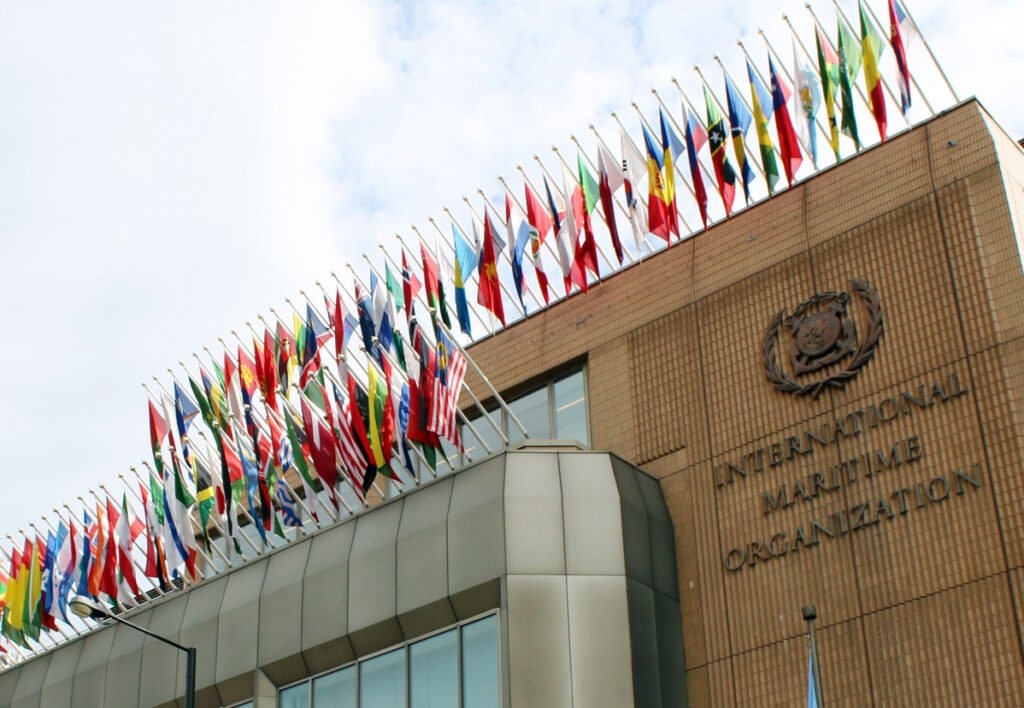The MEPC 79, the Global North, Global South, Island States, and Climate Change
while the IMO GHG regulations are getting complicated, the developing nations have added over 100 ports to the Maritime Industry within the last 10-15 years.
As the International Maritime Organization’s (IMO) regulations regarding greenhouse gas (GHG) emissions become increasingly complex, developing nations have made significant contributions to the maritime industry by adding more than 100 ports within the last 10-15 years.
The urgent need to address the growing climate crisis and the commitment to the Paris Agreement have called upon all parties to align their emissions reduction efforts to meet the target of limiting global warming to 1.5 to 2.0 degrees Celsius. The shipping industry alone emits approximately 1 million tonnes of carbon emissions, equivalent to the emissions of the fifth-largest emitting country. Recognizing its role as the regulatory body for the shipping industry, the IMO adopted the Initial IMO Strategy on the reduction of GHG emissions from ships (Resolution MEPC.304(72)) during the 72nd session of the Marine Environment Protection Committee (MEPC). This adoption was considered a major achievement due to the cross-border engagement of the shipping industry and multiple stakeholders from different sectors. Given that shipping accounts for over 80% of global trade, any policy changes in this sector will have a significant impact on the livelihoods of millions of people worldwide. The IMO GHG Strategy envisions peaking GHG emissions from international shipping as soon as possible and reducing total annual GHG emissions by at least 50% by 2050 compared to 2008 levels. Furthermore, efforts are being made to phase out GHG emissions entirely within this century. However, during MEPC 77, the revision of the strategy was initiated, and submissions were invited for MEPC 78. The Initial IMO GHG Strategy stipulates a 5-year review, with the next review scheduled for MEPC 80 in 2023.
Since the adoption of the IMO GHG Strategy, various complex issues related to technical, policy, economic, and communication matters have posed significant challenges. With different interest groups among the IMO members, the most prominent division during the MEPC discussions was between those advocating for enhanced ambition and achieving net-zero emissions by 2050 and those emphasizing the need for a comprehensive review of the strategy, including feasibility of implementation. These complex issues and diverse opinions have led to the extension of MEPC78 negotiations, resulting in the formation of an inter-sessional working group on GHG matters (ISWG-GHG 13) leading up to MEPC 79. During IMO MEPC 78 in June 2022, member states were scheduled to discuss GHG emissions reduction efforts. Secretary-General of IMO, Mr. Kitack Lim, briefed the revised initial IMO GHG strategy, which aimed for a 50% emissions reduction by 2050. However, it was acknowledged that this target was not aligned with global climate change goals, leading to calls for increased ambition.
The ongoing MEPC 79 in London aims to address climate change by focusing on reducing GHG emissions from ships through the following topics:
- Revision of the initial IMO GHG Strategy
- Development of mid-term measures, including technical and economic measures
- Finalization of the review of the Procedure of assessing the possible impact on the State
- Development of Lifecycle GHG assessment guidelines
- Proposals related to onboard CO2 capture
- Revision of the IMO Fuel Consumption Monitoring Data Collection System (IMO DCS)
- Energy efficiency of ships, including the report of fuel oil consumption data submitted to the IMO Ship Fuel Oil Consumption Database in GISIS (reporting year: 2021), proposed amendment to the 2018 Guidelines on the method of calculation of the Attained Energy Efficiency Design Index (EEDI), and EEDI phase 4.
During MEPC 78, the report of ISWG-GHG and the proposals received support from different interest groups. One group emphasized the importance of Life Cycle Assessment guidelines for evaluating emissions from ships and focused on sector-specific issues within the shipping industry. Some member states highlighted the significance of Tank-to-Wake (propeller) emissions, particularly in relation to the implementation of the Carbon Intensity Indicator requirements effective from January 1, 2023. Additionally, some member states advocated for a comprehensive approach that considers Well-to-Wake emissions, encompassing both upstream (well-to-tank) and downstream (tank-to-wake) emissions, including carbon dioxide equivalents and other greenhouse gases and particles. Major developed nations, including New Zealand, France, Norway, the UK, Canada, Germany, Japan, the US, Denmark, Belgium, Greece, Sweden, Australia, Spain, and Poland, supported the phasing out of GHG emissions from international shipping. These nations proposed more ambitious targets for 2030 and 2040. They share a similar approach in the IMO and adhere to the principle of ‘No More Favourable Treatment.’ Methane and NOx emissions, as well as the issue of ‘Methane Slip’ in LNG-fueled ships, were also highlighted. Furthermore, focus was placed on regional regulation developments within the European Union and the establishment of Green Shipping Corridors among major ports following the Clydebank Declaration at COP26. Developed nations expressed less support for the Common but Differentiated Responsibilities (CBDR) principle, asserting that it slows down the decarbonization process. During MEPC 78, the term ‘Fair Transition’ was proposed by some states within the developed nations’ group as an alternative to the CBDR principle.
On the other hand, developing economies such as India, China, South Africa, Brazil, Argentina, Thailand, UAE, Saudi Arabia, Philippines, Chile, and Ecuador, along with the most vulnerable nations or Small Island Developing States (SIDS) like Cook Islands, Vanuatu, and Marshall Islands, favored the CBDR approach and top-down regulations. These nations highlighted the importance of aligning with the Glasgow Pact, which recognizes the CBDR principle. They emphasized that CBDR was already recognized in the IMO’s initial strategy and should be included in the revised strategy to ensure a comprehensive review aligned with the Paris Agreement and the Glasgow Climate Pact. Some of the world’s largest oil and gas producers and exporters, such as Russia, the US, and Saudi Arabia, expressed more cautious views and stressed the need for fact-based reviews, including analyzing the costs of achieving goals and reviewing the availability of low and zero-carbon fuels in line with IMO’s 2020 sulfur regulations.
The CBDR Principle
Developing States, Capacity Building, Technology Transfer, Climate Justices
During MEPC 78, a clear grouping emerged in support of the CBDR principle. Member states supporting the CBDR principle aimed to acknowledge the historical contributions of developed nations’ GHG emissions since the 1700s. They called for developed nations to take the lead in climate action, provide capacity building assistance to vulnerable nations to address the climate crisis, and facilitate the transfer of new technologies to advance their economies. While the CBDR principle has been an essential tool in negotiating climate change agreements since the inception of the United Nations Framework Convention on Climate Change (UNFCCC), the shipping industry has faced a funding, technology transfer, and capacity building gap over the past decade. China has stepped in to address this gap through bilateral agreements under its Belt and Road Initiative. A recent report highlights that China has assisted in the development and construction of over 100 ports in Africa, either as a funder, builder, operator, or a combination of all three. Many of these ports are connected to land-based infrastructure such as roads and railways, creating a network of new trade routes expected to expand in the comingdecades. Some notable examples include Tamatave Port in Madagascar, Zanzibar New Port and Mombasa Port in Kenya, Dolareh Multipurpose Port in Djibouti, Lamu Port in Kenya, Massawa New Port in Eritrea, Port Sudan, Dar Es Salaam Port in Tanzania, and Bagamoyo Port in Tanzania, among others. For years, African nations had hoped for the IMO to address capacity building, technology transfer, and funding/investment needs to enhance their maritime capabilities. However, China has managed to fill this void through its rapid assistance. Consequently, the entire African coastal region is now transitioning into an alternative shipping hotspot, with the possibility of the bunker market reestablishing due to the stringent environmental regulations in European ports.
Additionally, several new ports in Asia have also emerged, including Gwadar Port in Pakistan, Chittagong Port in Bangladesh, Kyaukphyu Port in Myanmar, Karachi Deepwater Terminal in Pakistan, Payra Port in Bangladesh, Hambantota Port, and Colombo Port in Sri Lanka. China’s funding has also brought modern technologies to these ports. For instance, the CICT terminal in Colombo, invested in by China’s CMPort, is the first and only deepwater terminal in South Asia capable of handling the largest vessels. The company has implemented various IT-related innovations, such as the “e-boat note sand” mobile app, which enhances efficiency and generates cost savings for industry stakeholders.
As part of its green initiative, the CICT has made significant efforts to reduce carbon emissions. This includes the conversion of all rubber-tired gantry cranes to electric, resulting in a 40% overall reduction in carbon emissions at the CICT terminal in Colombo Port. These efforts have made the Port of Colombo an attractive destination for ultra-large container carriers at a competitive cost, while simultaneously achieving major GHG reductions.
In conclusion, MEPC 79 aims to address the impact of climate change on the shipping industry by focusing on reducing GHG emissions from ships. While various challenges and divergent viewpoints exist among IMO member states, discussions revolve around revising the IMO GHG Strategy, developing mid-term measures, finalizing impact assessment procedures, establishing lifecycle GHG assessment guidelines, proposing onboard CO2 capture solutions, revising the IMO Fuel Consumption Monitoring Data Collection System, and improving the energy efficiency of ships. Additionally, the CBDR principle remains a point of contention, with developing nations advocating for its application, while developed nations express less support. The involvement of China in funding and developing ports in Africa and Asia has presented both opportunities and challenges for the implementation of IMO’s GHG regulations.

The writer is an Independent Researcher On Maritime Affairs and BRI development. He graduated from Dalian Maritime University, and in 2016 he completed a Master’s Program in Environment and Natural Resources Protection Law at Ocean University of China. He is the Co-Founder of Belt & Road Initiative Sri Lanka (BRISL), an independent and pioneering Sri Lankan-led Organization, with strong expertise in BRI advice and support.
He can be reached via e-mail: info@brisl.org or Twitter – @YRanaraja


